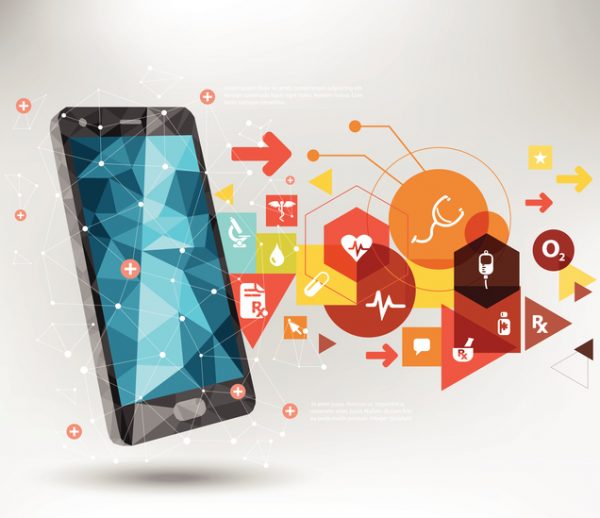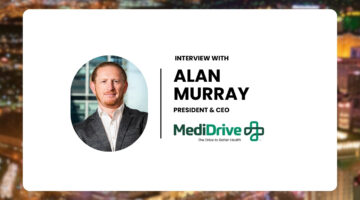
For years, patient engagement has been a top focus for healthcare leaders. But today’s patients are frustrated with the overall patient experience, in no small part due to their providers’ approach to communication. In fact, it’s one of the biggest obstacles to a quality patient experience – and, in turn, better patient outcomes.
Healthcare CRMs (customer relationship management systems) are specialized software systems that help healthcare organizations manage interactions with patients, streamline operations, and enhance care.
And in my experience, CRM success depends on an approach that leverages patient data and AI to support more timely and empathetic interactions.

NEMT Partner Guide: Why Payers and Providers Should Choose MediDrive’s TMS
Alan Murray on improving access for medical transportation.
Here I’ll share a three-pronged strategy that can help you do just that.
1. Integrate Your CRM with your entire digital ecosystem
Most healthcare CRMs tout their ability to provide a 360-degree view of every patient. But that view is only as good as the data used to create it. And to gather the right data, your CRM should be integrated with your entire digital ecosystem.
At a minimum, that should include:
- EHRs and EMRs
- Scheduling software
- Your patient portal
- Billing software
- E-referral software
- Knowledge management tools
With the right integrations, you can ensure that every patient interaction feels intentional and informed. Data itself, though, isn’t enough to effectively boost patient engagement. For that, your messaging has to be relevant and empathetic – aspects we’ll explore further in the next two sections.
2. Recognize the kind of messaging patients need
To improve patient engagement, it’s important to remember why patients are engaging with you in the first place. They want to manage their health – and most only want relevant information that can help them do just that.
But not all healthcare systems use CRMs to share that kind of information. I experienced that firsthand. When I tore my Achilles tendon, I interacted with two providers that had very different messaging strategies. The first one bombarded me with generic information – say, about new clinic locations or how to avoid summer injuries. But the second provider shared more tailored content, like specific exercises and tips that could help me get back to full strength.
I didn’t really connect with the first provider’s content. But the second provider’s messaging kept me engaged and motivated throughout my recovery. Even now – long after my treatment has ended – I still find their updates valuable because they’re just that relevant.
Experiences like mine are fairly common. And that means plenty of patients are likely apathetic to (if not actively turned off by) communications from their providers.
To solve this problem, make sure your CRM is equipped to help you share:
- The right information, like articles or videos to help patients manage their specific conditions
- Via the right channel based on patients’ preferences (e.g., text for appointment reminders and email for long-form content or important documents)
- At the right time, for example right after a check-up based on diagnostic triggers, or in the evening after work based on message open or click-through rates
The takeaway? With more relevant content, you can keep patients engaged throughout their care journey.
3. Communicate with empathy
Patient empathy is a priority for most hospitals today. But many struggle to consistently convey empathy across their communications.
One major reason? Hospitals often have to choose between personalized messaging and messaging at scale. Many choose the latter – but that decision can easily lead to one-size-fits-all messaging that rings hollow instead of sounding supportive.
The reality is that patients often vary in their relationship to both their own medical needs and the healthcare system. For instance, consider a patient who’s recently been diagnosed with type two diabetes. They’ll likely need blood draws every three months to monitor their A1C levels.
But maybe the patient is ashamed of diagnosis because of the stigma. And they don’t trust anyone to draw their blood after a few bad experiences. Plus, it’s just hard for them to take time off to come into the office.
Empathetic communication must take factors like these into account. In this scenario, you might set up your CRM to send automatic scheduling reminders that use warm and gentle language. But you might also share a few videos to help them come to terms with their new diagnosis. Or offer tips for sitting through blood draws. And you might suggest calling your office if they need to talk about scheduling flexibility.
This approach doesn’t just emphasize relevant communication – it meets patients exactly where they are in their health journey. That’s huge for boosting engagement and adherence.
As for the scalability challenge, consider using Gen AI tools to quickly produce empathetic messaging across segments. For example, you can prompt it to craft language for patients with certain chronic conditions and suggest the most useful resources to share – saving your staff loads of time.
Some CRMs already have native AI capabilities. But if yours doesn’t, it may be worth exploring third-party tools that can connect to your platform. The bottom line? With the right approach and software, you can create scalable messaging that resonates.
Every patient interaction matters
A healthcare CRM is much more than a data management tool. It helps you make a strong first impression on each patient and strengthen relationships over time.
With patient outcomes on the line, the stakes of that work couldn’t be higher. Every patient interaction matters. It’s worth investing in the tools and capabilities you need to get things right.
Photo: exdez, Getty Images








